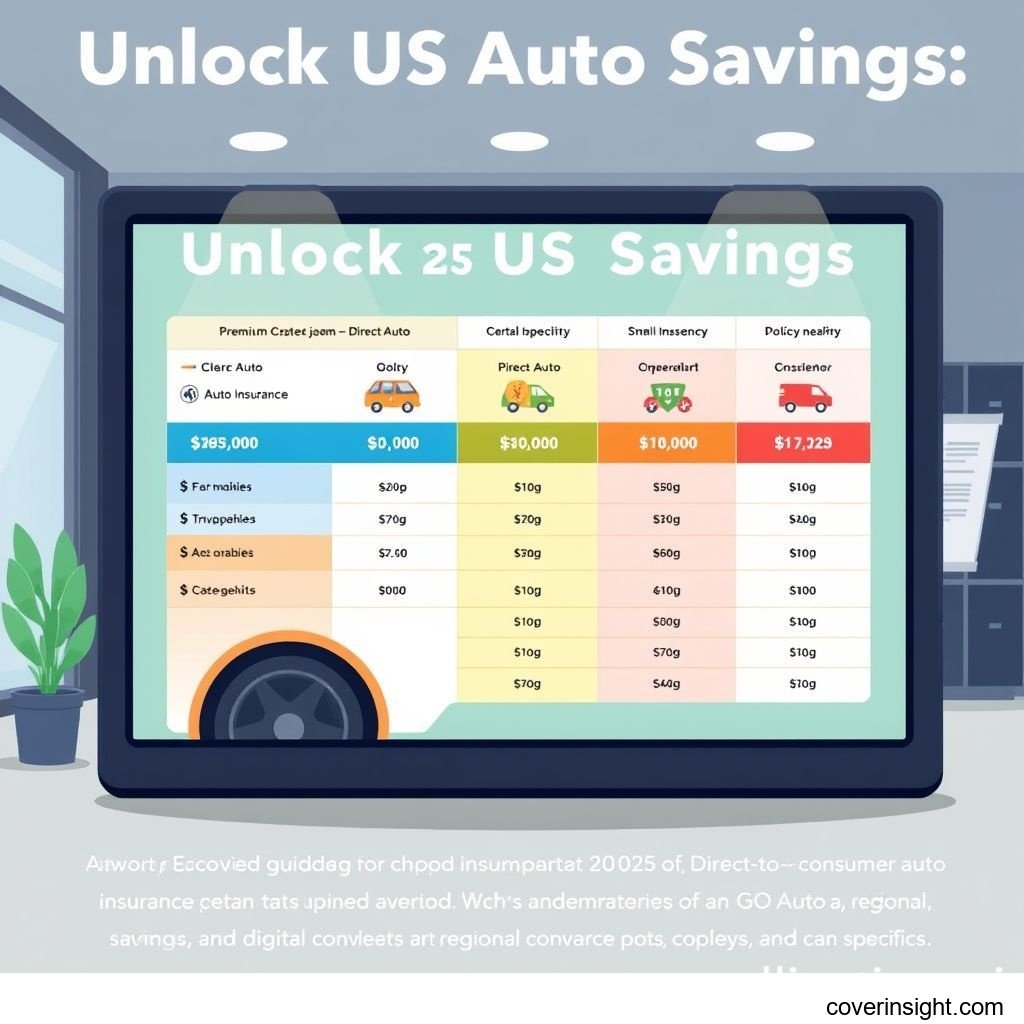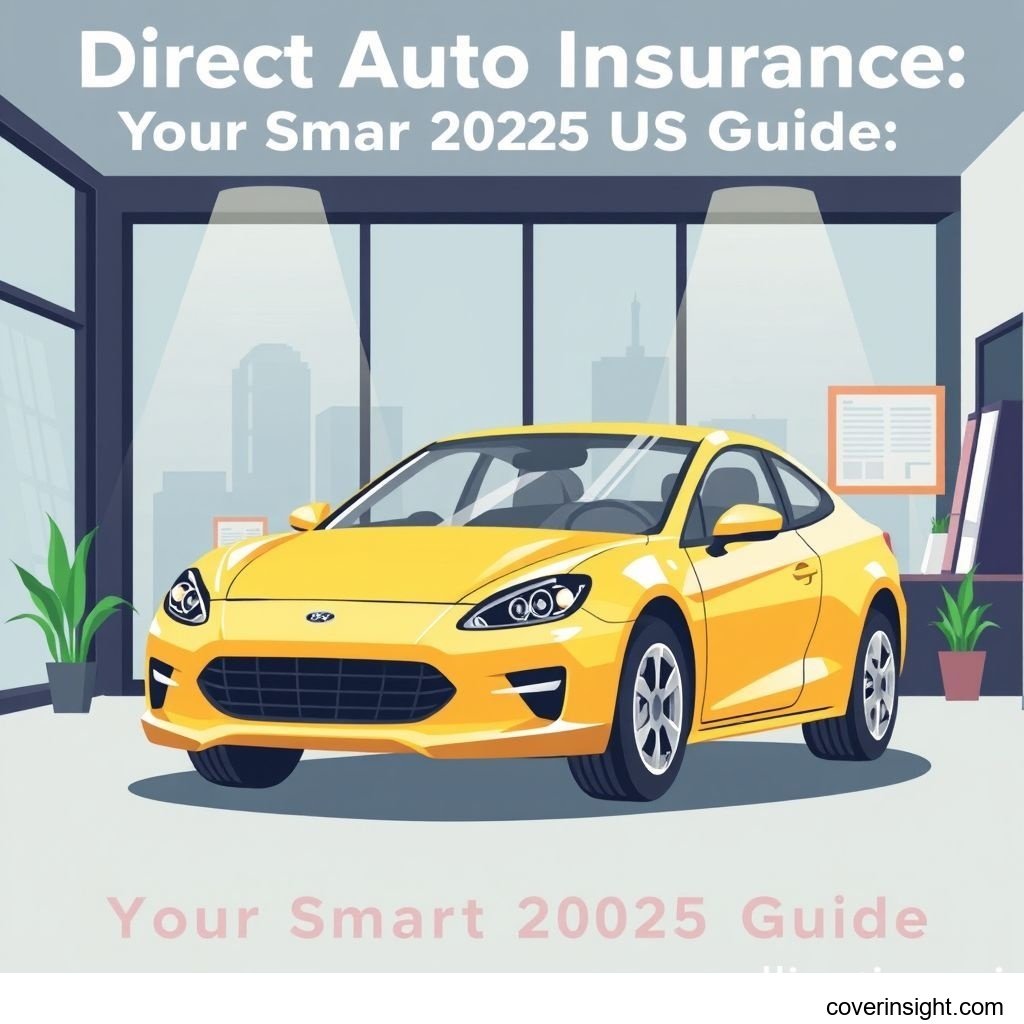Unlock US Auto Savings: Direct, Clearcover, GoAuto 2025
Introduction
In the rapidly evolving landscape of US auto insurance, 2025 is shaping up to be a pivotal year for consumers seeking value and convenience. Direct auto insurance, where you purchase coverage straight from the insurer rather than through an agent, continues to gain traction, promising streamlined processes and potentially lower premiums. It's an approach that appeals to many who prefer to manage their policies digitally and are comfortable doing their own research. Understanding these options, particularly from players like Direct Auto, Clearcover, and GoAuto, is more important than ever as economic pressures and changing driving habits reshape the industry. For a deeper dive into what makes these providers tick, you might find our [Direct Auto Insurance Reviews 2025: US Guide] especially helpful.
Coverage Details
Navigating the world of auto insurance can feel like walking through a minefield, but understanding what’s typically included and what’s not is half the battle.
What’s Included
Most direct auto insurance policies, including those from Direct Auto, Clearcover, and GoAuto, offer a standard suite of protections. This usually begins with liability coverage, which is legally mandated in most states. It pays for damages and injuries you cause to other people and their property if you’re at fault in an accident. Then there's collision coverage, which steps in to pay for damages to your own vehicle regardless of who's at fault, often minus a deductible. Comprehensive coverage is your safeguard against non-collision incidents like theft, vandalism, fire, or natural disasters – think hail damage or a tree falling on your car. Many policies also include uninsured/underinsured motorist (UM/UIM) coverage, a true lifesaver if you're hit by a driver without enough insurance to cover your medical bills or vehicle repairs. Some even offer extras like roadside assistance or rental car reimbursement, which can be worth their weight in gold when you're in a pinch.
Common Exclusions
While policies cover a lot, they aren't a blank check. Common exclusions often include intentional damage – you can't wreck your car on purpose and expect a payout. Damages from racing or using your personal vehicle for commercial purposes without specific endorsements are typically off-limits. Most insurers also won't cover wear and tear or mechanical breakdowns. Furthermore, highly customized parts or modifications to your vehicle might not be covered unless explicitly added to your policy, so always double-check if you've put a custom sound system or performance upgrades in your ride.
Cost Analysis
For many, the bottom line is, well, the bottom line. How much will this truly cost, and more importantly, how can you keep more pennies in your pocket?
Price Factors
Several factors play into your auto insurance premiums, acting like ingredients in a complex recipe. Your driving record is paramount; a spotless history generally means lower rates, while accidents or speeding tickets can send them soaring. Your age and gender, while sometimes controversial, are also considered, as younger drivers typically face higher premiums due to less experience on the road. The type of vehicle you drive matters too – a luxury sports car costs more to insure than a modest sedan. Where you live and park your car, your ZIP code, can significantly affect rates due to varying risks of theft, vandalism, or accidents in that area. Even your credit score can play a role in many states, as insurers view it as an indicator of financial responsibility. Finally, the coverage limits and deductibles you choose directly impact your premium: higher limits and lower deductibles generally mean higher costs.
Saving Tips
Cutting down on auto insurance costs doesn't have to feel like pulling teeth. One of the best strategies is to bundle your policies; many direct insurers offer discounts if you combine auto with home or renters insurance. Another common-sense approach is to maintain a good driving record – avoiding accidents and tickets is truly the best discount. In fact, according to the [National Association of Insurance Commissioners (NAIC)], the average expenditure for private passenger auto insurance in the U.S. has seen a steady increase, making savvy savings even more critical. Consider taking a defensive driving course; some insurers offer discounts for this. Raising your deductible can also lower your premium, but make sure you can afford that higher out-of-pocket expense if an accident occurs. And always, always compare quotes from multiple providers. Websites run by your [State Insurance Departments] can offer valuable resources on understanding and comparing policies specific to your area. Remember the adage: a penny saved is a penny earned.
FAQs
Here are some common questions many people ponder when diving into the world of direct auto insurance.
How much does direct auto cost? The cost varies widely based on numerous individual factors like your driving history, vehicle type, location, and the coverage levels you select. While direct insurers often tout competitive rates due to lower overheads, it's crucial to get personalized quotes.
What affects premiums? Premiums are influenced by your driving record, age, gender, vehicle type, credit score (in most states), location, and the specific coverage limits and deductibles you choose. The more risk an insurer perceives, the higher your premium will likely be.
Is it mandatory? Yes, auto insurance is mandatory in almost every U.S. state, though specific requirements (like minimum liability limits) vary. New Hampshire is a notable exception, though financial responsibility is still required. It’s always best to check with your State Insurance Department to know your local requirements.
How to choose? Choosing the right direct auto insurer involves comparing quotes, assessing their customer service reputation, reading reviews (our [Direct Auto Insurance Reviews US 2025: Smart Choices] can be a great starting point), and ensuring the coverage options meet your specific needs and budget. Look beyond just the price tag; consider the overall value and reliability.
Consequences of no coverage? Driving without mandatory auto insurance can lead to severe penalties, including fines, license suspension, vehicle impoundment, and even jail time in some states. More importantly, if you're involved in an accident, you'll be personally responsible for all damages and injuries, which could lead to significant financial ruin. Just last year, a case in Arizona highlighted the plight of a young driver, Mark, who caused a fender-bender. Because he lacked insurance, he faced not only hefty fines but also a personal lawsuit for damages that wiped out his meager savings. It's simply not worth the risk.
Author Insight & Experience
As someone living in the US and having navigated the ins and outs of auto insurance for years, I've seen firsthand how quickly circumstances can change, and with them, insurance needs. The shift towards direct models like Clearcover and GoAuto is more than just a trend; it reflects a genuine consumer desire for transparency and control. Based on my experience, embracing technology to compare quotes and manage policies directly can genuinely save you a pretty penny and a lot of headaches. It's about being proactive and informed, rather than just passively renewing the same old policy year after year. The market is competitive, and that's a win for consumers who are willing to put in a little legwork. Taking the time to explore options like [Direct Auto Insurance: Your Smart 2025 US Guide] isn't just smart; it's essential for protecting your financial future on the road.








Comments